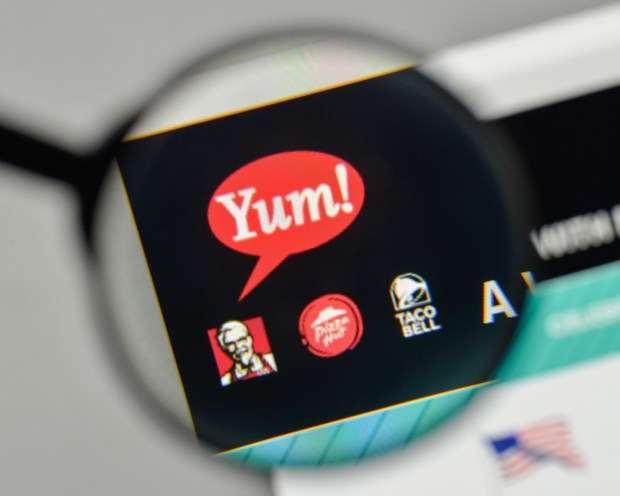Yum! Brands On How Delivery, Digital And Takeout Are Their Future

Yum! Brands beat Wall Street’s expectations when its earnings were released Wednesday, as an assortment of new menu offerings were successful in drawing more foot traffic into its Taco Bell and KFC locations this quarter. According to reports, pickle-fried chicken and nacho fries were big draws.
Pizza Hut, on the other hand, didn’t look quite so strong. Same-store sales fell 1 percent, as the pizza chain struggled to differentiate itself from competitors and attract new customers, CEO Greg Creed said on a call with investors post-earnings release.
“First of all, Pizza Hut is a slow turnaround,” he said. “We [have] got to do a better job of communicating value … do I think we can do better with Pizza Hut in the U.S.? Yes, I do.”
Pizza Hut has been trying to turn itself around in the U.S. by ramping up its value offerings, such as offering large two-topping pizzas for $5.99 and marketing heavily during football games. However, not all franchisees have adopted these new prices, even though the ones that have are reporting better results than those that have not.
All in, however, Yum, said its net income rose 8.6 percent to $454 million, or $1.40 per share during the quarter. Revenue in the quarter fell 3 percent to $1.39 billion, but still beat the $1.38 billion that had been forecast. Taco Bell reported same-store sales growth of 5 percent, while KFC reported 3 percent same-store sales growth.
The earnings report also particularly highlighted Yum! Brands’ efforts at expanding its digital offerings (like mobile order-ahead) and delivery options in the U.S. and around the world. According to Creed, delivery will be online in 2,000 KFC locations in the U.S. and 4,000 Taco Bells by the end of this year.
Creed also spoke at some length about the brand’s partnership with Grubhub to drive sales to KFC and Taco Bell through online ordering for pickup and delivery. Creed noted that 1,200 KFC restaurants now offer delivery through Grubhub, which covers around 30 percent of U.S. locations. He also noted that the Taco Bell POS and Grubhub marketplace integration announced in September is already in 2,100 stores (30 percent of the U.S. market).
“We have seen positive early results along with valuable operations learnings. Franchisees are very excited about delivery as an opportunity to drive incremental sales and are all in on delivery as a major brand initiative,” Creed noted. “While we are in very early stages of our partnership, the check growth and incrementality of sales that we see is encouraging and supporting expansion throughout the franchise systems.”
Creed also noted that delivery and pick-up will continue to be crucial for Yum’s evolution going forward, because the data suggests that consumers are dining in at restaurant locations less often in the U.S. and around the world. Takeout, he noted, is quickly becoming the dominant interaction type Yum is seeing at all its chain restaurants of late. In the long run, that change will likely mean reconceiving stores as walk-up locations as opposed to sit-down. In the shorter run, however, delivery and mobile enhanced pickup options are allowing customers to customize their brand experience so they keep coming back, even if they don’t want to sit down and eat.
“We recently opened our 30th domestic urban concept, which includes walk-ups and cantinas, and are excited about the opportunity to tap this near-greenfield market,” Creed said. “This quarter, we celebrated openings in New York, Chicago and Raleigh, and look forward to more high-profile openings later this year, including our first company cantina in Manhattan. So, stay tuned.”
Something we are all likely to do – if for no other reason than to see if Pizza Hut can get back in the saddle again (Pizza Fries, perhaps? Pickle-Fried Pizza?) and to see what Yum! Brands’ digitized edition will look like six months down the road.
